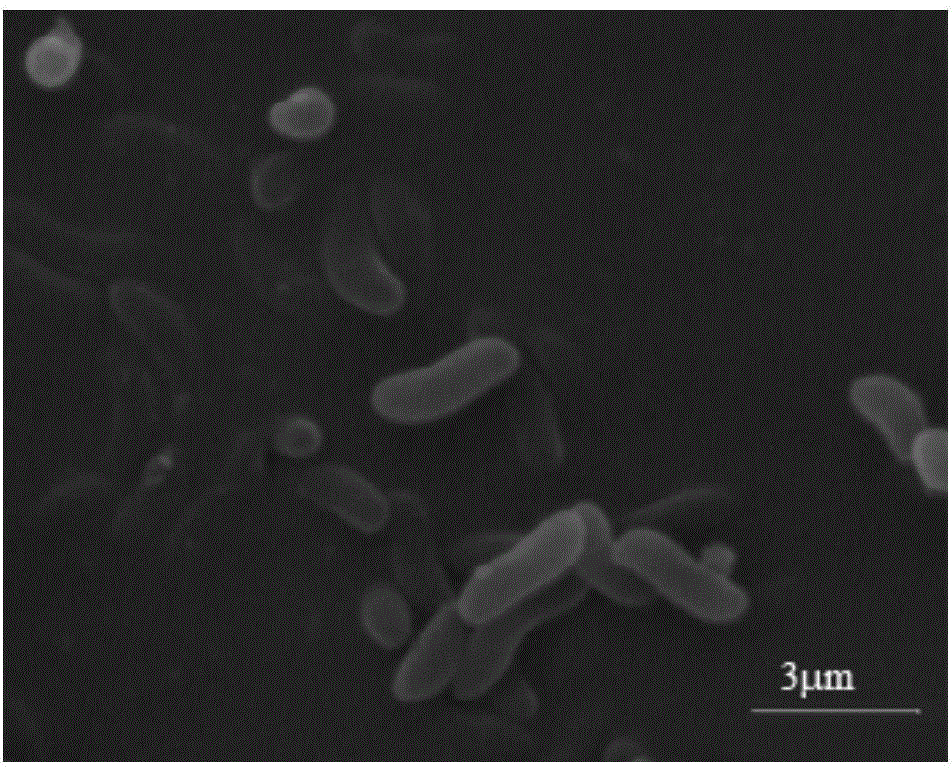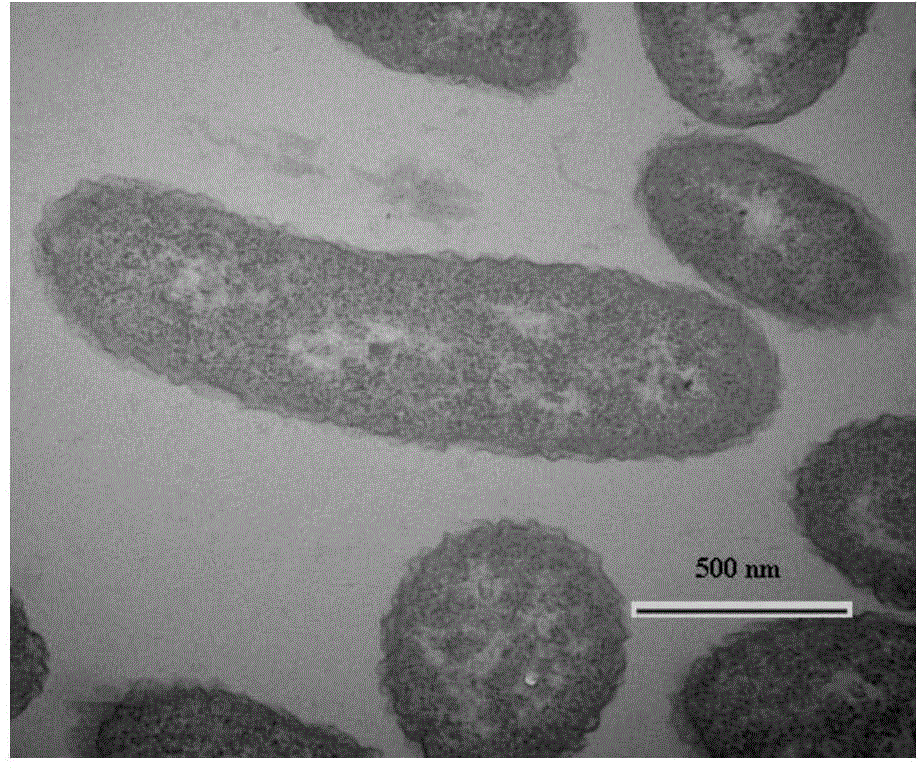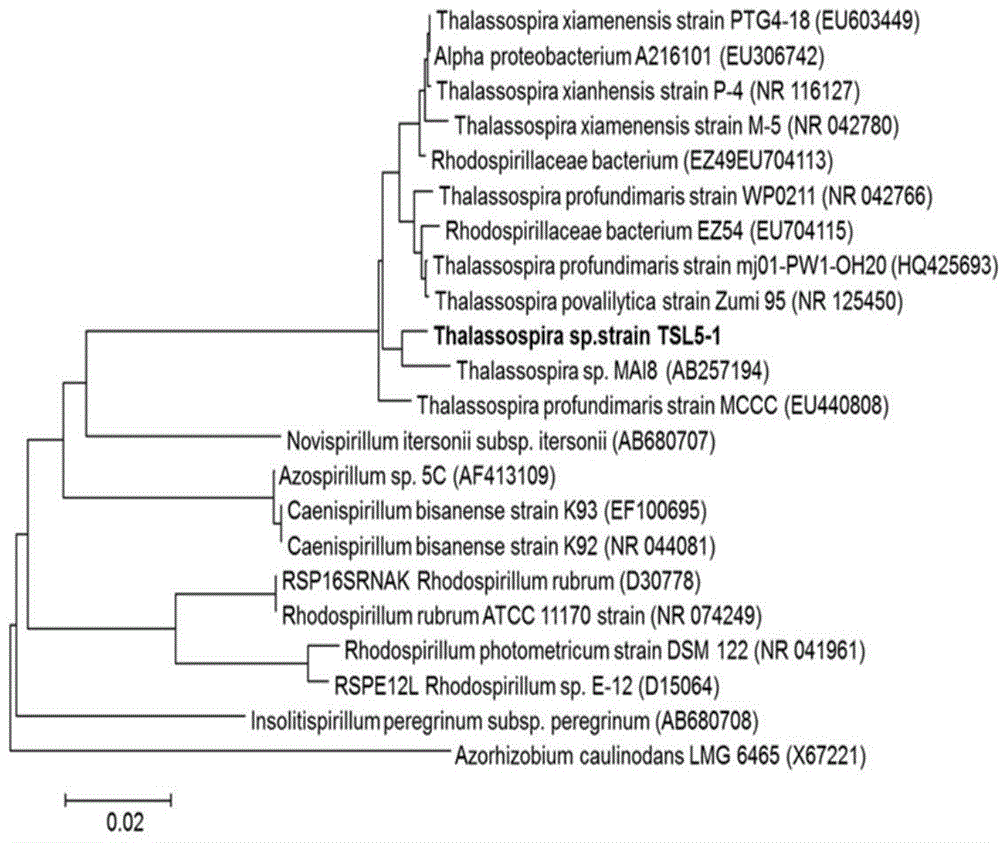Thalassospira sp. capable of degrading polycyclic aromatic hydrocarbons under saline environment and application thereof
A polycyclic aromatic hydrocarbon and spirulina technology, which is applied in the field of environmental pollution biological treatment, can solve the problems of low tolerance concentration, narrow microbial salt tolerance range, and cannot be applied to high-cyclic aromatic hydrocarbon pollution biological treatment, etc. The effect of applying value
- Summary
- Abstract
- Description
- Claims
- Application Information
AI Technical Summary
Problems solved by technology
Method used
Image
Examples
Embodiment 1
[0030] Example 1. Isolation and identification of Thalassospira sp.TSL5-1 (Thalassospira sp.TSL5-1, CGMCC No.10278)
[0031] The long-term oil-contaminated soil from Shengli Oilfield was used as the screening soil. The specific screening scheme is as follows:
[0032] 1) Take 5.0g of soil, add it to MSM medium (mineral salt of pyrene (20mg / L) as the only carbon source and energy source) with a salinity of 5.0%, culture at 30°C and 170rpm constant temperature shaking; after acclimatization for 15 days, take The cultured bacteria solution was transferred to fresh medium with successively increasing pyrene concentration with 10% inoculum amount, and was subcultured under the same culture conditions. This was done continuously for 5 times.
[0033] Wherein the composition of the MSM medium with a salinity of 5.0% is: 3.0g / L Na 2 SO 4 , 0.3g / L NH 4 Cl, 0.15g / L CaCl 2 2H 2 O, 0.2g / L KH 2 PO 4 , 0.5g / L KCl, 50g / L NaCl, 7.5g / L MgCl 2 ·6H 2 O, 1.0ml / L trace element solution, ...
Embodiment 2
[0071] Embodiment 2, Thalassospira sp.TSL5-1 (Thalassospira sp.TSL5-1, CGMCC No.10278) performance of degrading pyrene
[0072] 1) Medium containing pyrene (pyrene is the only carbon source and energy source): dissolve pyrene in acetone, filter and sterilize, and then add it to the MSM medium with a salinity of 5.0%, so that the final concentration of pyrene in the medium is The concentration is 20mg / L;
[0073] 2) Bacterial inoculum: pick the Helicotrium TSL5-1CGMCC No.10278 obtained in Example 1 and inoculate it in a medium containing pyrene, and culture it with shaking for 7 days. Take the culture solution and centrifuge at 5000rpm for 10min, remove the supernatant, centrifuge and wash three times, and resuspend in fresh MSM medium to make the OD of the bacterial solution 600 It is about 0.25, and it is used as the inoculum solution of the degradation experiment.
[0074] 3) Strain growth and pyrene degradation experiments: the above-mentioned inoculum solution was inocul...
Embodiment 3
[0077] Example 3, Thalassospira sp.TSL5-1 (Thalassospira sp.TSL5-1, CGMCC No.10278) degradation performance of pyrene at different salinities
[0078] 1) Medium containing pyrene at different salinities (pyrene is the only carbon source and energy source): dissolve pyrene in acetone, filter and sterilize, and then add to the medium with a salinity of 0.5%, 1.5%, 3.5%, and 5% , 9.5% and 19.5% MSM medium (the preparation of each salinity medium refers to the MSM medium of 5.0% salinity, and the addition content of NaCl is adjusted accordingly according to the salinity requirements), so that the final content of pyrene in the medium The concentration is 20mg / L;
[0079] 2) Bacterial inoculum: pick the Helicotrium TSL5-1CGMCC No.10278 obtained in Example 1 and inoculate it in a medium containing pyrene, and culture it with shaking for 7 days. Take the culture solution and centrifuge at 5000rpm for 10min, remove the supernatant, centrifuge and wash three times, and resuspend in fr...
PUM
 Login to View More
Login to View More Abstract
Description
Claims
Application Information
 Login to View More
Login to View More - R&D
- Intellectual Property
- Life Sciences
- Materials
- Tech Scout
- Unparalleled Data Quality
- Higher Quality Content
- 60% Fewer Hallucinations
Browse by: Latest US Patents, China's latest patents, Technical Efficacy Thesaurus, Application Domain, Technology Topic, Popular Technical Reports.
© 2025 PatSnap. All rights reserved.Legal|Privacy policy|Modern Slavery Act Transparency Statement|Sitemap|About US| Contact US: help@patsnap.com



